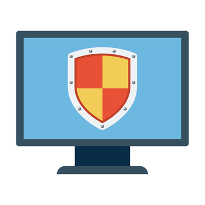Unified Threat Management - Comprehensive Network Security in a World of Threats

Take control of your network security with a UTM
Your business’ online environment is well-known for being host to countless threats that want to steal the data of businesses just like yours. Problems such as viruses, malware, and spyware consistently pose massive threats to not just your own network infrastructure, but to your budget as well. Sensitive information that’s stolen can crush your business under the weight of steep compliance fines, while also ruining your reputation as a trustworthy organization.
Understanding Ransomware
 Understanding Ransomware
Understanding Ransomware
What You Need to Know About the Malware that Hits Your Data, and Then Your Wallet
Cyber criminals have no shortage of tools at their disposal in their attempts to abuse and take advantage of those they set their sights on. Recently, however, it seems that more and more of them select ransomware as their weapon of choice. Knowing what ransomware is, and how to avoid falling victim to it, is critical to a business’s survival. Fortunately, this particular malware has a few distinct characteristics that make it relatively simple to identify and describe.
Understanding Business Continuity
A Well-Structured Continuity Plan Can Save Your Business

When the sky is falling on your business, can you make it through the storm?
For the average business owner, business continuity is looked upon as a secondary system that is put in place to protect the investments the business has made. Since the platform doesn’t have much to do with a business’ day-to-day operations, often times some aspects of a business’ continuity strategy is overlooked; a major mistake that the business owner will realize when it is suddenly too late.
Understanding General Data Protection Regulation Compliance
 Understanding General Data Protection Regulation Compliance
Understanding General Data Protection Regulation Compliance
In April of 2016, the European Union Parliament and Council voted to replace Data Protection Directive 95/46/ec and enact an overreaching data security regulation named the General Data Protection Regulation (GDPR). The law will go into effect in the May 25, 2018 and be the primary law regulating how businesses protect EU citizens’ personal data. Companies that need to meet the old security directive will need to be in compliance of the new law on that date or face stiff fines and other penalties.
More Articles...
Sign Up for Our Newsletter
Free Consultation
Sign up today for a
FREE Network Consultation
